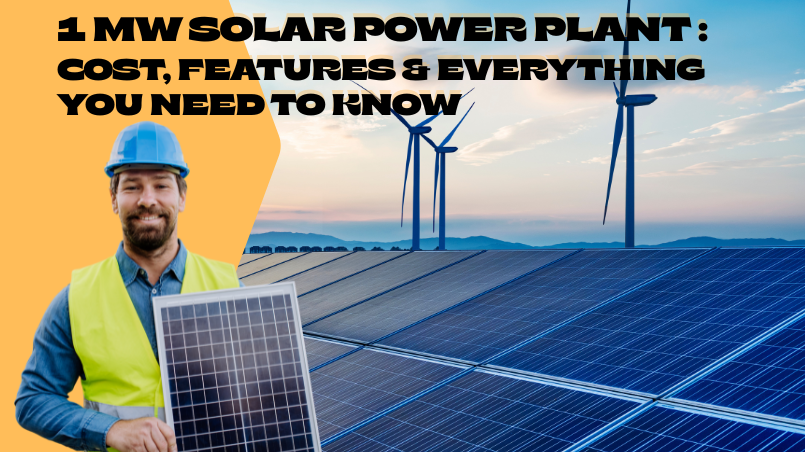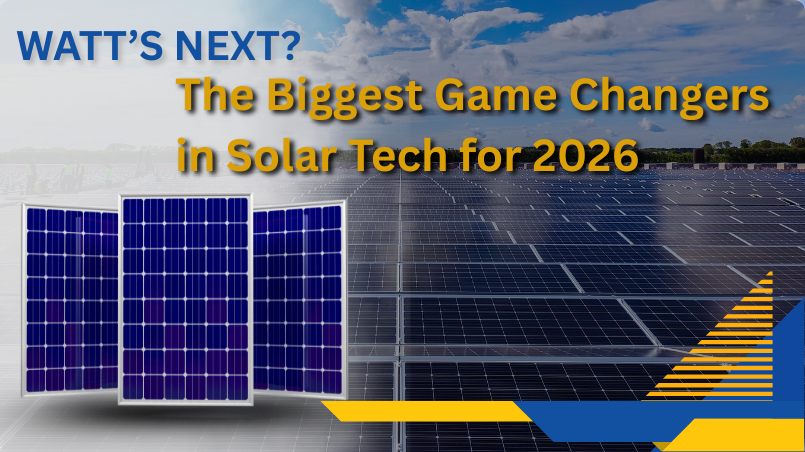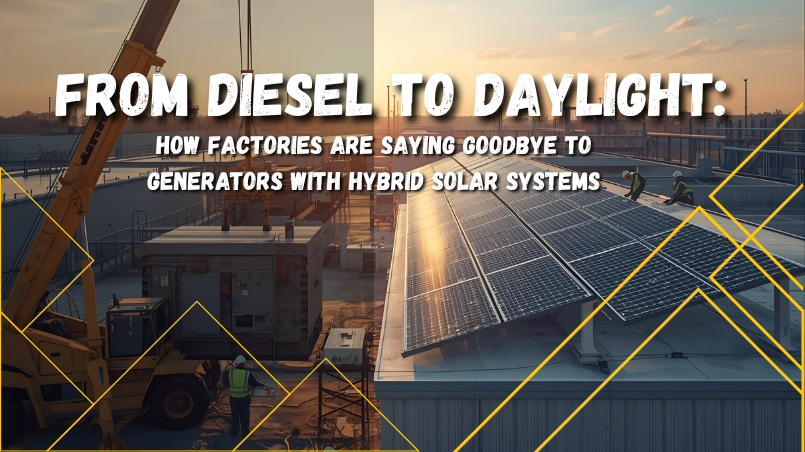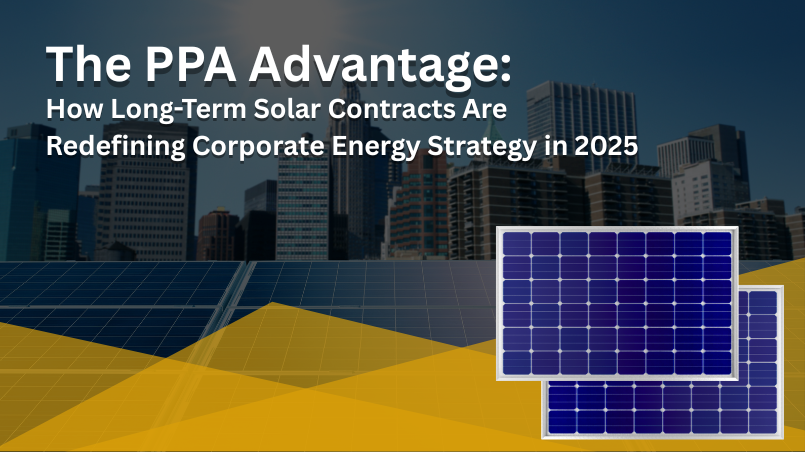1 MW Solar Power Plant: Cost, Features & Everything You Need to Know
The typical cost of a grid-tied 1 MW solar power plant (excluding battery storage) in India in 2025 averages ₹4 to ₹5 crores.....
Setting up a 1 MW solar power plant is a big step—one that can transform energy costs, reduce carbon footprint, and provide steady power for industries, institutions, or commercial operations. In 2025, with better tech, clearer policies, and falling costs, this investment is more accessible than ever. Below, you’ll find what a 1 MW plant involves, how much it costs on average, and what features you should watch out for.
What Does a 1 MW Solar Power Plant Include?
A plant of this size typically consists of:
* Solar PV modules (panels)
* Inverters and power electronics
* Mounting structures (fixed-tilt or tracking)
* Cabling, junction/combiners, safety devices
* Land (if ground-mounted) or large roof space
* Monitoring & SCADA (system to track performance)
* Installation, civil works, labour, and grid connection
These components define both performance and cost.
Average Cost in 2025
The typical cost of a grid-tied 1 MW solar power plant (excluding battery storage) in India in 2025 averages ₹4 to ₹5 crores.
Here’s a simplified cost breakdown:
Cost Breakdown of a 1 MW Solar Plant
|
Component |
Estimated Share of Cost |
|
Solar Panels (PV Modules) |
50–55% |
|
Inverters & Power Electronics |
10–15% |
|
Mounting Structures |
10–15% |
|
Wiring & Balance-of-System |
5–10% |
|
Installation, Labour & Civil Works |
5–10% |
|
Monitoring & Grid Integration |
2–5% |
Note: Percentages are indicative and vary by brand, site conditions, and technology choices.
Features & Configuration Options
To maximize returns and reliability, consider:
* Fixed-Tilt vs Tracking: Tracking panels follow the sun to boost output (by ~10–20%) but cost more. Fixed-tilt is simpler and lower-cost.
* Monocrystalline vs Polycrystalline Panels: Monocrystalline panels are more efficient (especially valuable if land or roof space is limited).
* Hybrid & Grid-Tied Systems: Grid-tied setups are standard. Hybrid systems with battery backup offer power during outages but add to cost.
* Monitoring/SCADA: Real-time performance tracking helps spot issues and maintain efficiency.
* Safety & Protection: Earthing, surge protection, and string monitoring—these ensure longevity and reduce risk.
Land, Site & Layout Considerations
* Land Requirement: Ground-mounted 1 MW setups usually need about 4–5 acres. Rooftop setups require large, shadow-free areas.
* Location & Solar Irradiance: Areas with high sunlight reduce panel requirements and increase yield.
* Civil Work: Site leveling, fencing, and drainage can add cost.
Operation, Maintenance & Lifespan
A well-designed plant should last 25+ years. Module degradation is around 0.5–0.7% per year. Annual O&M costs (cleaning, inverter checks, etc.) are generally 1–3% of the initial capital cost.
Return on Investment & Payback Time
With average electricity rates, net metering (where applicable), and reliable system performance, most 1 MW plants recover their capital investment in 4–6 years. After that, they generate relatively “free” electricity with minimal ongoing costs.
Why SunGarner
SunGarner is one of India’s trusted solar energy solution providers, offering complete EPC (Engineering, Procurement & Construction) services for industrial and commercial solar projects, including 1 MW plants. The company is known for its transparent pricing, high-efficiency solar modules, advanced Solar Inverters, and turnkey project delivery—from design and engineering to installation and maintenance. Whether you’re setting up a rooftop or ground-mounted system, SunGarner ensures optimal performance, faster ROI, and long-term reliability through advanced monitoring, skilled service teams, and premium components.
At SunGarner, we specialize in designing, supplying, and maintaining 1 MW solar plants with transparency, efficiency, and strong after-sales support. Our installations focus on ensuring you get the most out of your investment—high performance, low downtime, and clean power that pays you back.
Frequently Asked Questions
1. What is the average cost of setting up a 1 MW solar plant in India in 2025?
On average, a grid-tied 1 MW plant costs around ₹4 to ₹5 crores, depending on component quality, location, and setup type.
2. How much power does a 1 MW plant typically produce in a year?
Around 13-15 lakh units (kWh) per year, depending on location and efficiency of panels.
3. How long does it take to recover the investment (payback period)?
With good electricity rates and strong system performance, payback generally comes in 4–6 years.
4. What increases the cost beyond the base estimate?
Add-ons like battery storage, solar trackers, premium panel brands, remote location, difficult terrain, and higher land costs can significantly increase cost.
5. What are the key maintenance expenses I should expect annually?
Typically, cleaning, solar inverter servicing, monitoring system upkeep, and minor repairs. These usually cost 1-3% of the initial capital cost per year.









